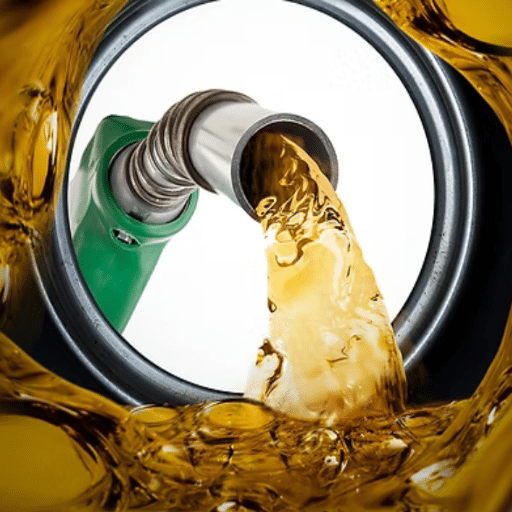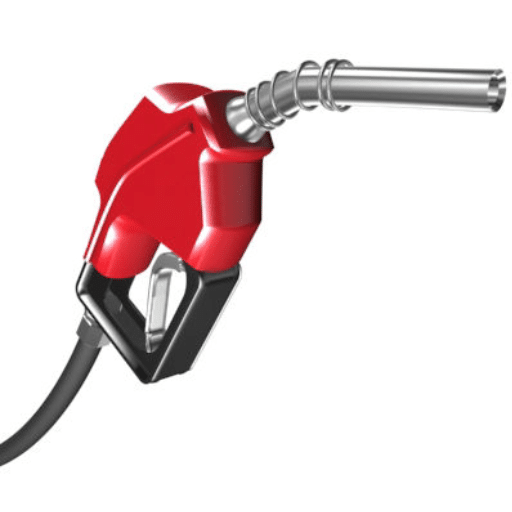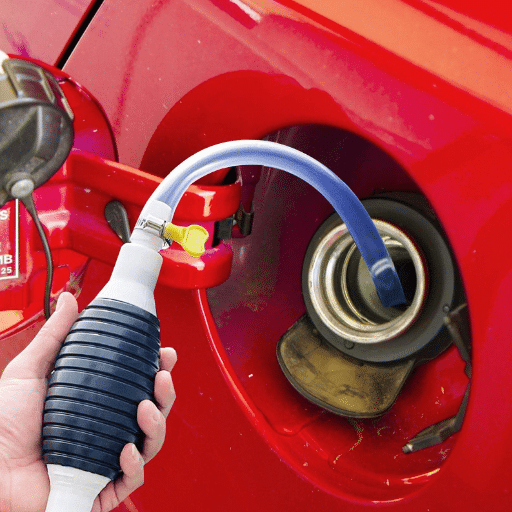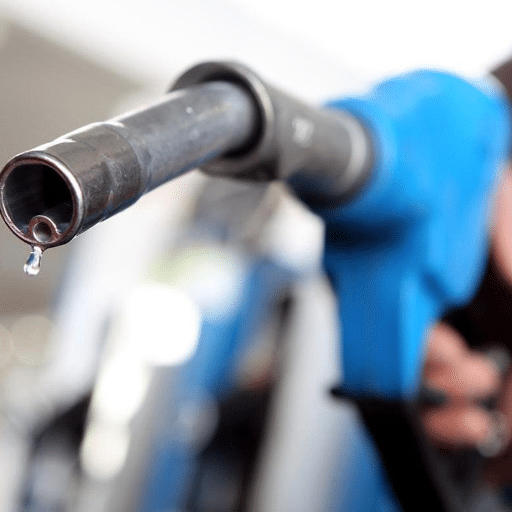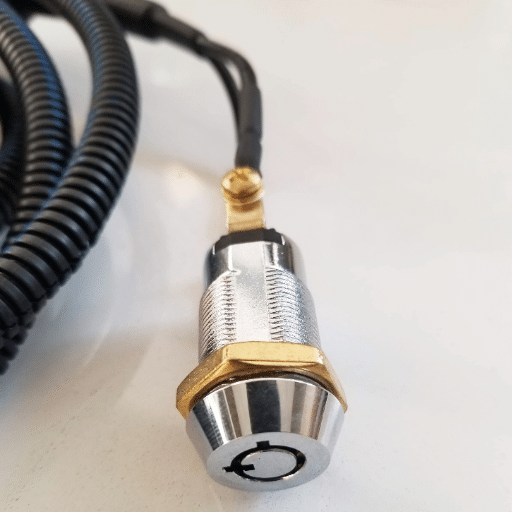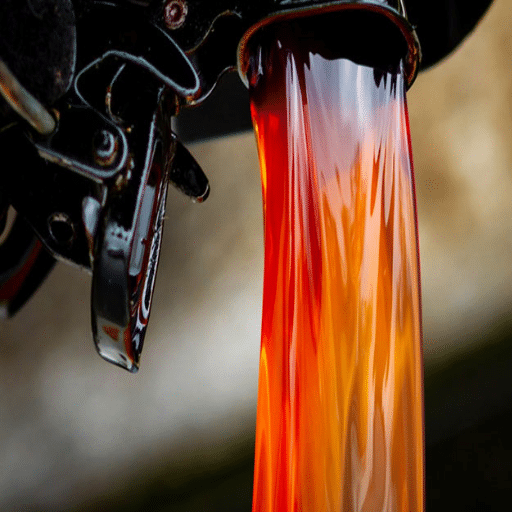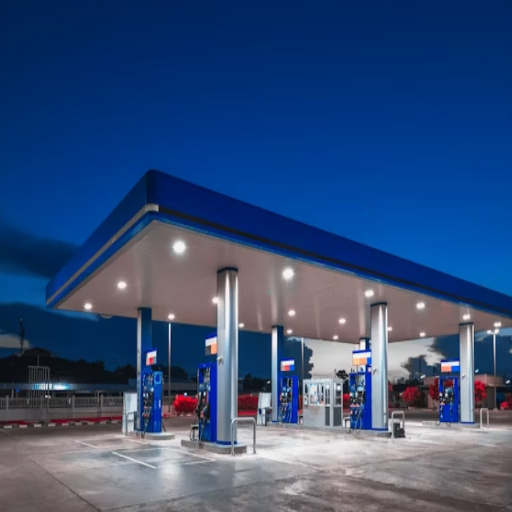If one’s mind goes into the fuel system of a vehicle, the idea of an electronic fuel pump submerged in gasoline might seem somewhat inherently dangerous. How can an element, so significant with electric currents, perform safely within such a highly flammable atmosphere? Because of innovative design, safety standards, and the paramount physical properties of gasoline. This blog post will explore the science behind it, along with the technology of fuel pumps, to demonstrate how they prevent sparks, heat, or electrical malfunctions from igniting a fire. By the end of this, you will be taste-testing the ingenuity behind making your ride run safely each day.
Understanding the Fuel Pump Mechanism
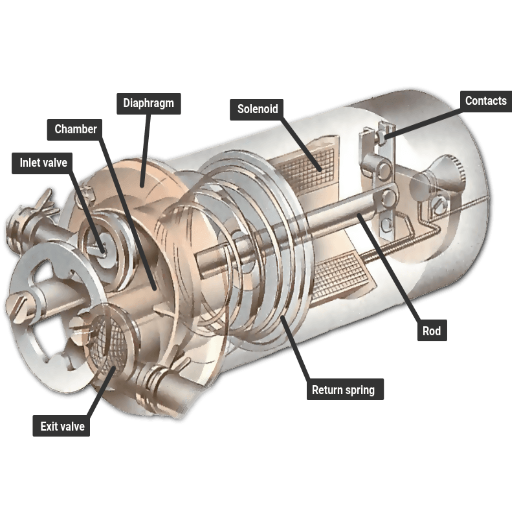
Fuel pumps are precisely engineered to prevent hazards. Their primary function is to transfer gasoline from the fuel tank into the engine. It does so through sealed components that isolate the electrical connections, thereby minimizing the chance of sparks between those connections and the surrounding atmosphere. The motors of the pumps are fully submerged in liquid gasoline to prevent ignition of vapors, as gasoline in its liquid form is not very flammable. Moreover, modern fuel pumps adhere to the highest safety standards, featuring the best thermal protection systems and anti-static features to prevent overheating or electrical malfunctions and ensure a prompt return to working state if such issues arise. Essentially, all these mechanisms work together to ensure that fuel delivery is safe and efficient.
Components of the Fuel Pump
The fuel pump comprises several critical components, each playing a vital role in the efficient delivery of fuel within a vehicle. They include:
Electric Motor: The electric motor drives the fuel pump, building pressure to force petrol from the tank to the engine. Motors built today are highly durable and can withstand heat and prolonged operation.
Pump Housing: The housing holds together the vital parts of the fuel pump while preventing contamination and imparting structural integrity to the fuel pump. Usually, it is made of materials exhibiting corrosion resistance, at least, such as aluminum or high-strength composite materials, to withstand the hostile atmosphere of a fuel tank.
Impellers or Gears: Depending on the type of pump (rotary vane, gear-type, or turbine), the impellers or gears inside are responsible for moving the fuel throughout the system. The design of these components enhances the pump’s efficiency and ensures the fuel lines are maintained at a consistent pressure.
Pressure Regulator: An essential feature that regulates the pressure of the fuel delivered to the engine. Proper regulation of pressure ensures the engine operates at its optimum and protects its components from damage caused by excessive fuel flow.
Fuel Filter: Typically integrated within the fuel pump assembly, the fuel filter filters out impurities, such as dirt and rust particles, from the fuel before it reaches the engine. Preventing clogging helps increase engine life.
Check Valve: It prevents fuel from flowing backward into the tank when the engine is switched off, ensuring the proper flow of fuel downstream. This feature enables a smoother startup, as pressure in the lines is maintained.
Float and Sensor Unit: Many fuel pumps feature a float and sensor arrangement that measures the fuel level inside the tank and transmits this information to the fuel gauge on the vehicle’s dashboard.
Electrical Connection: These provide electrical power to the pump motor and must be constructed to resist corrosion. Their role cannot be overemphasized for the operation of the fuel pump.
Every component is engineered and tested to meet strict performance and safety standards. For example, modern electric fuel pumps supply fuel at pressures between 30 and 60 PSI in gasoline engines, while some systems for direct fuel injection soar above 2,000 PSI. Such technological advances indicate the level of precision and complexity that goes into supporting modern automotive performance.
How the Fuel Pump Operates
Operating a fuel pump is a crucial component of any vehicle’s fuel delivery system, which supplies the engine with fuel in an amount sufficient for optimal performance. Now, modern fuel pumps are generally electric pumps that draw fuel from the tank and push it through the fuel lines toward the engine. The system comprises precision-made elements, including a motorized pump, a pressure regulator, and check valves, which maintain constant pressure despite fluctuations in demand.
The electric fuel pumps force more fuel into the impeller or turbine, producing a pressure of approximately 30-60 PSI, which is sufficient for the smooth operation of the engine, similar to that of regular gasoline engines. With the advancement of direct fuel injection technology, high-pressure fuel injection has become indispensable, as some systems inject fuel at pressures exceeding 2,500 PSI for improved atomization and, consequently, enhanced combustion efficiency.
Another interesting feature is the integration of fuel pumps with the vehicle’s electronic control unit (ECU), which enables them to vary flow rates in real-time based on data from sensors measuring engine load, throttle position, and oxygen content in the exhaust. Furthermore, the majority of fuel pumps nowadays use returnless systems that prevent fuel heating and consequently improve vehicle efficiency by eliminating the need for fuel to be returned to the tank.
The fuel pump design also incorporates safety mechanisms, including anti-corrosion materials to withstand continuous exposure to fuel and advanced sealing mechanisms to prevent leakage. These features, combined with precise engineering and robust quality controls, ensure that the fuel pump operates reliably and remains durable even under harsh driving conditions.
Role of the Motor and Brush
Within a fuel pump, the motor and brush have an elemental function to collect fuel efficiently and consistently. The motor, typically electric, drives the pump mechanism, allowing for the supply of fuel under pressure. Newer fuel pump motors are designed to use less energy while maintaining high efficiency, thereby directly contributing to improved fuel efficiency in vehicles.
The brushes in brushed motors carry the electrical current between the stationary wires and the rotating motor. To minimize wear and enhance endurance, these are typically made from high-grade materials, such as carbon or composite blends. Modern-day fuel pumps utilize improved designs that employ optimally applied brush tension and positioning, thereby reducing friction and heat buildup during operation, which increases operational life.
Information indicates that advanced fuel pump motors can achieve an efficiency figure of up to 85%, while some high-end models designed for heavy-duty applications offer even greater resilience and stability in operation. There are additional improvements in implementing brushless motor technologies in the newest fuel pump systems, which no longer require brushes. This eliminates maintenance, decreases noise, and prolongs operational life. These developments demonstrate how the motor and brush assembly are evolving in modern automotive engineering to meet the increasing demands placed on fuel pumps by present-day vehicles.
Fire Safety Features of Fuel Tanks
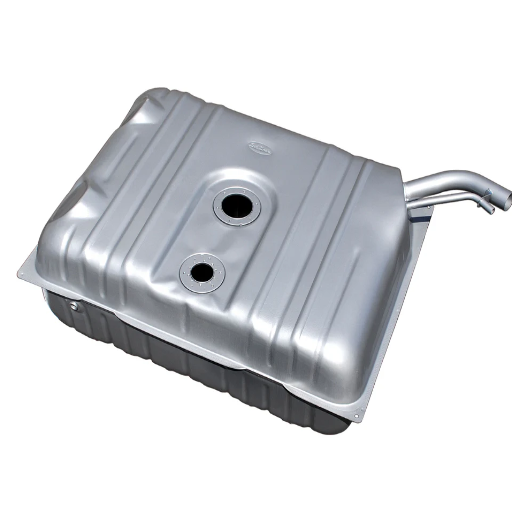
Modern gas tanks are manufactured with fire safety features to reduce risk and ensure passenger safety. These features typically include anti-spark materials that prevent ignition, internal baffles to impede fuel movement and minimize the risk of spillage in the event of an accident, pressure relief valves to eliminate excessive pressure inside the tank, and flame arrestors to prevent flames from entering the tank. Rigorous testing standards are also used to ensure that tanks meet safety standards for use in the motor automotive industry.
Design Considerations for Fuel Tanks
Fuel tanks have traditionally been designed with safety, operational efficiency, durability, and compliance with environmental regulations in mind. The choice of materials is critical. In general, tanks can be manufactured from high-density polyethylene (HDPE) or metals, such as aluminum or steel, depending on their intended purpose. Being lightweight and corrosion-resistant, HDPE tanks are becoming increasingly preferred for modern vehicles, whereas metal fuel tanks emphasize strength and ease of manufacture.
Other key considerations include the tank’s capacity and shape. A typical capacity for passenger cars ranges from 12 to 25 gallons, with the tank designed to fit in every inch of available space inside the car’s chassis. With advanced manufacturing techniques like blow molding for plastic tanks, customized shapes can be created that help improve vehicle efficiency by minimizing unnecessary weight and lowering the vehicle’s center of gravity.
Environmental factors have further driven the push for emission standards. Nowadays, the fuel tanks come with evaporative emissions control systems, such as the carbon canister system, to trap fuel vapors. Industry data indicate that technological advances in fuel vapor management have significantly reduced hydrocarbon emissions over the past decade, exceeding the stringent regulations established by organizations such as the Environmental Protection Agency (EPA).
In addition, fuel tanks are considered safe under extreme conditions. For example, modern fuel tanks are also tested for crush resistance and puncture resistance to ensure they can withstand impact. Standardized testing, as defined by the National Highway Traffic Safety Administration (NHTSA), further includes drop, fire, and pressure tests to limit hazards during accidents.
Now, with modern computer modeling and testing, manufacturers can very rapidly optimize the performance of their fuel tanks in line with ever-changing safety and environmental standards. This shows the ongoing commitment toward dependable and safe fuel storage solutions that can be sustained.
Materials Used in Construction
Modern fuel tank construction is heavily dependent on advanced materials, striking a balance between safety, durability, and environmental performance. Such materials commonly include high-density polyethylene (HDPE), which is preferred due to its light weight, corrosion resistance, and ability to withstand impact forces. HDPE minimizes the gross weight of vehicles, which in turn helps reduce fuel consumption.
Steel and aluminum alloys are also commonly used materials in fuel tank construction, particularly for applications that require greater strength and durability. Steel has enormous puncture resistance and highly recyclable properties, hence meeting sustainability targets in manufacturing processes. Aluminum stands somewhere between steel and plastic in terms of strength and weight, making it the material of choice in vehicles that target performance optimization.
Advanced composite materials, such as carbon fiber-reinforced polymers, are being increasingly used in the design of modern fuel tanks. Several recent advanced materials offer a high strength-to-weight ratio and enhanced environmental resistance, including resistance to temperature changes and chemical attacks. At the same time, multilayer constructions involving materials such as ethylene vinyl alcohol (EVOH) are also developed to provide good barrier properties, thereby curbing hydrocarbon emissions and earning favorable environmental reviews.
The properties of these materials are engineered specifically for specific industries, meeting industrial and regulatory requirements. This enables modern fuel tanks to become superb, reliable, and environmentally friendly, thereby enhancing vehicle safety and fuel storage technology.
Safety Standards and Regulations
Modern-day fuel tank systems are manufactured in accordance with a strict set of safety standards and regulations, which are continually updated to reflect evolving environmental considerations. On a global scale, policy-making for fuel storage systems is handled by organizations such as the UNECE, the EPA, and the EU. For instance, the UNECE Regulation No. 34 formulated very rigorous pan-European standards on fuel tank integrity and fire resistance to protect against risks in the event of a road traffic accident. In the case of evaporative emissions, bodies like the EPA have emissions requirements to control pollution by hydrocarbons, and therefore require innovative barrier materials and tank designs.
Lately, the data show attempts to impose lower limits on permeability from the fuel tank, with restrictions in some cases being hydrocarbon emissions of 1.5 g/m² per day. With crashworthiness becoming one of the key demands in pollution norms, fuel tanks are mandatorily subjected to drop, impact, and pressure tests, ensuring that the tanks can withstand these tests and will not leak. These mandates, in turn, have led to new developments in multilayer tank fabrication, comprising newer materials such as HDPE and polyamide.
Hence, manufacturers that follow these standards are not only conversant with environmental and safety requirements but also participate in efforts to abate air pollution and enhance public safety on roadways.
Factors Preventing Ignition of Gasoline
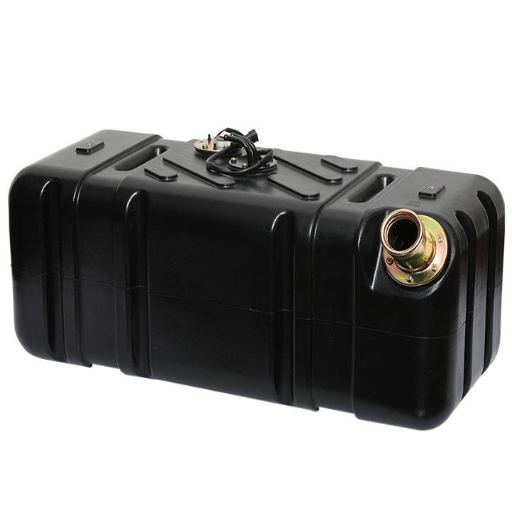
Many factors are crucial in preventing the ignition of gasoline. First, the containment within properly designed fuel tanks minimizes exposure to ambient heat and potential ignition sources. The tank design also uses materials that are non-flammable and heat-resistant, thus adding another layer of safety. Second, suitable ventilation systems ensure that these flammable vapors do not build up inside any confined spaces. Lastly, observing procedural storage and transfer guidelines, such as “no open flames or sparks around fuel,” is crucial in preventing ignition. Together, these ensure a safer environment for the handling and transportation of gasoline.
Fuel Pump Location and Protection
The placement of a fuel pump inside a vehicle is very critical for its safety, efficiency, and performance. Most modern cars have an in-tank type fuel pump, meaning the pump is located within the tank, submerged in the fuel. The positioning of the pump is for safety reasons. First, the fuel acts as a coolant for the pump, preventing it from overheating while in operation. Second, it reduces the chance of sparking since any potential ignition source would be snuffed out by the liquid gasoline present in the pump.
Another defense mechanism would be the protective arrangements put in place at the design and location of the fuel pump. Vehicles are equipped with protective shields or enclosures to shield them from damage caused by road debris and, in certain circumstances, accidents. Furthermore, many fuel systems are designed with safety shutoffs to prevent fuel from being released in the event of a collision.
Technological innovations in fuel pump technology encompass the use of stainless steel parts for durability and an advanced motor design for improved efficiency. Manufacturers also strive to muffle noise and vibrations from the fuel pump, thereby enhancing the smoothness of the driving experience. Statistics prove that, depending on working conditions and maintenance, the average lifespan of a modern fuel pump runs between 100,000 and 200,000 miles.
Maintaining basic operations, such as monitoring the fuel level to prevent it from dropping too low and changing fuel filters at regular intervals, can significantly extend the expected working life of a fuel pump and enhance its safety features. The design and functioning of fuel pump systems, driven by excellent placement, heavy-duty protection, and technological breakthroughs, are therefore based on the principles of human safety and vehicle reliability.
Cooling Mechanisms within the Fuel Tank
Such fuel tanks have cooling mechanisms that maintain efficiency throughout the lifespan of modern fuel systems. Keeping the fuel pump cool, the pump is merely immersed in the fuel level. The liquid fuel serves as a heat sink, absorbing and dissipating the heat generated by the pump during its operation. This also prevents the pump-equipment components from overheating too rapidly, thereby promoting durability.
The modern fuel system is engineered for better thermal handling. The fuel return lines play a significant role in temperature management. By returning excessive fuel to the tank, circulation prevents heat from being concentrated in one area of the pump or tank.
While data indicates that the normal operating temperature range for fuel pumps is 130°F (54°C) to 180°F (82°C), prolonged periods of temperatures outside this range can cause the pumps to fail prematurely. Automakers have thus adopted materials and design features that maximize the rate of heat transfer, with examples including heat-resistant coating and integrated cooling circuits.
This level of safety and performance is heightened through the aid of these mechanisms and technologies in modern fuel tanks, thus guaranteeing the proper functioning of the tank under all driving conditions. Regular upkeep and maintaining sufficient fuel levels form the two main stimuli in protecting these cooling mechanisms.
Electronics and Spark Prevention
In any fuel system design, the employment of electronics ensures safety and efficiency. The prevention of sparks in fuel surroundings is a worthy issue; even slight sparks can ignite flammable vapors with disastrous repercussions. Manufacturers employ a combination of rugged design principles and advanced technologies to mitigate these hazards.
For example, let’s say anti-static techniques are applied to fuel system components: conducting materials may be used, or straps may be employed to dissipate electrostatic charges. Electrical connectors and wiring in the system are also shielded against accidental arcing. Industry reports suggest that shielded electronic devices reduce the chances of fuel vapor ignition by more than 90%, which attests to their utility.
In another instance, yet another significant improvement comes with the addition of fail-safe circuits and sensors. These devices detect voltage levels and automatically shut down potentially hazardous electronics when a fault is detected. Modern fuel systems often consist of Electronic Control Units (ECUs) with built-in diagnostics to evaluate the integrity of wiring and detect spark risk in real-time. Research shows that such diagnostics improve reaction time by up to 25%, thereby enhancing safety further.
Employing these state-of-the-art technologies makes modern-day fuel systems remarkably safe to operate, even under the most extreme conditions, instilling confidence in the driver and reducing the likelihood of alarming dangers.
Common Misconceptions About Fuel Pump Fires
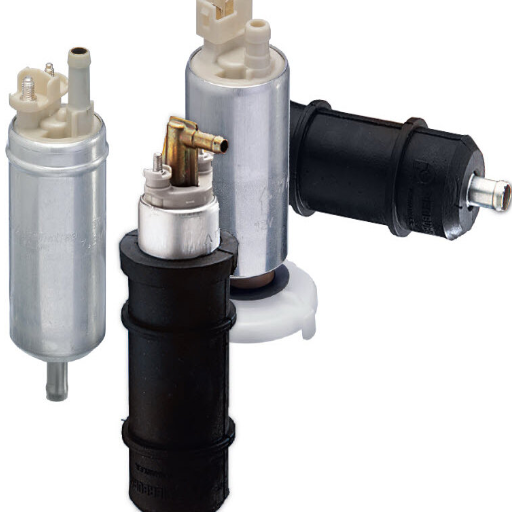
One frequently held misconception is that sparks from the wiring system mainly cause fuel pump fires. Whereas recent fuel systems have advanced safety measures, such as insulated wiring and spark resistance, to curb the risk. Another incorrect belief is that running on low fuel can cause a fire. Running on low fuel can cause the pump to overheat over time, but it does not cause a fire, as safety measures are in place to prevent it.
Myths Surrounding Fuel Combustion
Another fuel combustion myth is that premium fuel is more efficient and better for engine performance in any vehicle. While premium fuel has a higher octane rating and is suitable for high-performance engines designed to avoid knocking, it generally does not provide upgrades in either performance or fuel efficiency in a standard engine. If recent studies can be trusted, it seems that more than 16 million drivers in the United States are unnecessarily spending close to $2.1 billion a year on premium gasoline for vehicles that do not require it! Thus, it becomes imperative that consumers should be aware of their vehicle’s particular fuel requirements, which can usually be found in the manufacturer’s manual.
Another popular fallacy is that fuel with a high octane rating is a strong cleaner. Modern fuels of all grades, including regular gasoline, contain detergent packages that help prevent engine deposits and keep the engine clean. It should also be noted that since higher compression engines require premium fuel, they are more concerned about a potential long-term mechanical problem, and less about cleaning. Understanding these subtleties will enable the consumer to make informed decisions about fuel, money, and unnecessary waste.
Expert Opinions and Research Findings
Several recent experts have emphasized the importance of selecting the proper fuel grade to ensure peak vehicle performance and optimal efficiency. According to data collected from industry reports and automotive research organizations, regular gasoline with detergent additives is typically sufficient to meet the needs of vehicles in maintaining engine cleanliness and preventing deposit buildup. However, cars with high-performance engines that demand premium gas benefit from its higher octane rating, which prevents engine knocking and allows for maximum work under high compression.
It has been found that higher-grade fuel is not generally a performance enhancement for a vehicle designed to use regular gasoline. The A.A.A., for example, proves that nearly 16.5 million American drivers spend up to $2.1 billion yearly on premium-grade fuel for vehicles that do not require it. There is little to no performance or fuel efficiency advantage shown by tests when premium fuel is used for engines that are not designed for it.
Moreover, experts stress the environmental implications that its needless usage entails. Vehicle owners can reduce their ecological carbon footprint and contribute to the sustainability of energy resources by choosing fuels as specified by their manufacturers. Thus, individuals can connect fuel choice with engine requirements and arrive at a solution that combines saving money and contributing to the environment.
Regular Maintenance of Fuel Pumps
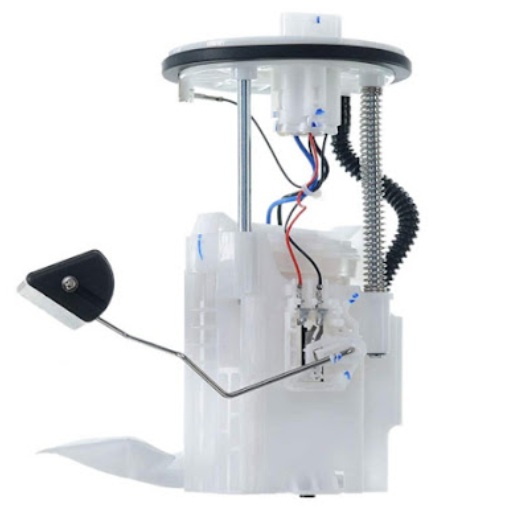
Your pump must be maintained regularly to ensure the efficient operation of your vehicle and to prevent expensive repairs. Some of the key things to check for are signs of wear, i.e., any unusual noises or a reduction in fuel efficiency. According to the manufacturer, you should also have your fuel filters changed. Also, keep the fuel level in the tank adequately high so the pump does not overheat or become damaged. Always refer to the vehicle’s manual for specific maintenance times and deadlines to maximize the lifespan of the fuel pump and enhance its performance.
Monitoring Fuel Tank Health
Maintaining a fuel tank in good condition is essential to ensure the proper operation and safety of your vehicle. A final inspection for corrosion, cracking, or leaks in the fuel tank can help prevent a significant issue. Over 70 percent of premature fuel system failures are generally due to either debris or contaminants entering the system, many times because of a neglected fuel tank. An uncleaned tank filled with sediment and water can cause more trouble, as these two invite rusting and clogging. Higher-quality fuel helps reduce deposits, and fuel additives that clean work towards maintaining a clean tank. At least one-quarter full tank businesses also serve to protect the fuel pump from manual and condensation-related issues within the tank that may otherwise cause water accumulation. Therefore, continue to check and perform the necessary maintenance on the fuel system to ensure it lasts longer.
Tips for Safe Fuel Handling
Using fuel means always keeping safety in mind. Ensuring proper ventilation while working is essential to prevent inhaling fumes. Touching fuel with any flame or spark is strictly prohibited. Only containers specifically designed for storing fuel are suitable; additionally, the containers must be sealed tightly to prevent spills or evaporation. While refilling the tank, I do not overfill it; if spills occur, these are cleaned immediately, as they might form fire hazards. Maintaining awareness while following these steps ensures fuel handling is both safe and efficient.
Reference Sources
Frequently Asked Questions (FAQs)
What prevents the fuel pump inside a fuel tank from catching fire?
The fuel pump inside a fuel tank is designed to operate in a fuel-rich environment, which minimizes the risk of fire. The presence of gasoline ensures that the air-to-fuel ratio remains within safe limits, reducing the chances of ignition.
How does the design of the fuel tank minimize the risk of explosion?
The fuel tank is designed to contain fuel and vapor effectively, preventing the mixture of air and gasoline from reaching an explosive ratio. Components are insulated and sealed to manage the risks associated with static electricity and external heat sources.
What role does insulation play in preventing fire inside a fuel tank?
Insulation within the fuel tank helps to maintain a stable temperature and prevents heat from external sources from igniting the gasoline. This ensures that the conditions remain safe and reduces the likelihood of a fire occurring.
Can a weak fuel pump increase the risk of fire inside the fuel tank?
A weak or malfunctioning fuel pump may not effectively circulate fuel, leading to a lean air-to-fuel ratio that can increase the risk of combustion. Regular maintenance or replacement of the pump is essential to ensure safe operation.
How does static electricity affect the safety of fuel pumps?
Static electricity can pose a risk of fire if it ignites gasoline vapors. Fuel tanks and pumps are designed to minimize static build-up through proper grounding and the use of materials that reduce friction, ensuring safety during operation.
What should be done if a new pump is installed in the fuel tank?
When a new pump is installed, it is crucial to ensure that it is properly attached and that all connections are secure. This helps to prevent leaks and ensures that fuel is managed safely within the fuel tank, reducing the risk of fire.
Is it safe to expose the fuel pump to air?
Exposing the fuel pump to air can be hazardous if it results in a mixture of air and fuel vapor. It is essential to keep the fuel system sealed to prevent the presence of oxygen that can ignite flammable vapors.
What precautions should be taken during fuel tank maintenance?
During maintenance, it is crucial to verify that all components, including the pump and pipes, are in good working condition. Avoiding sparks, using non-static tools, and working in a well-ventilated area can help manage the risk of fire and ensure safety.

